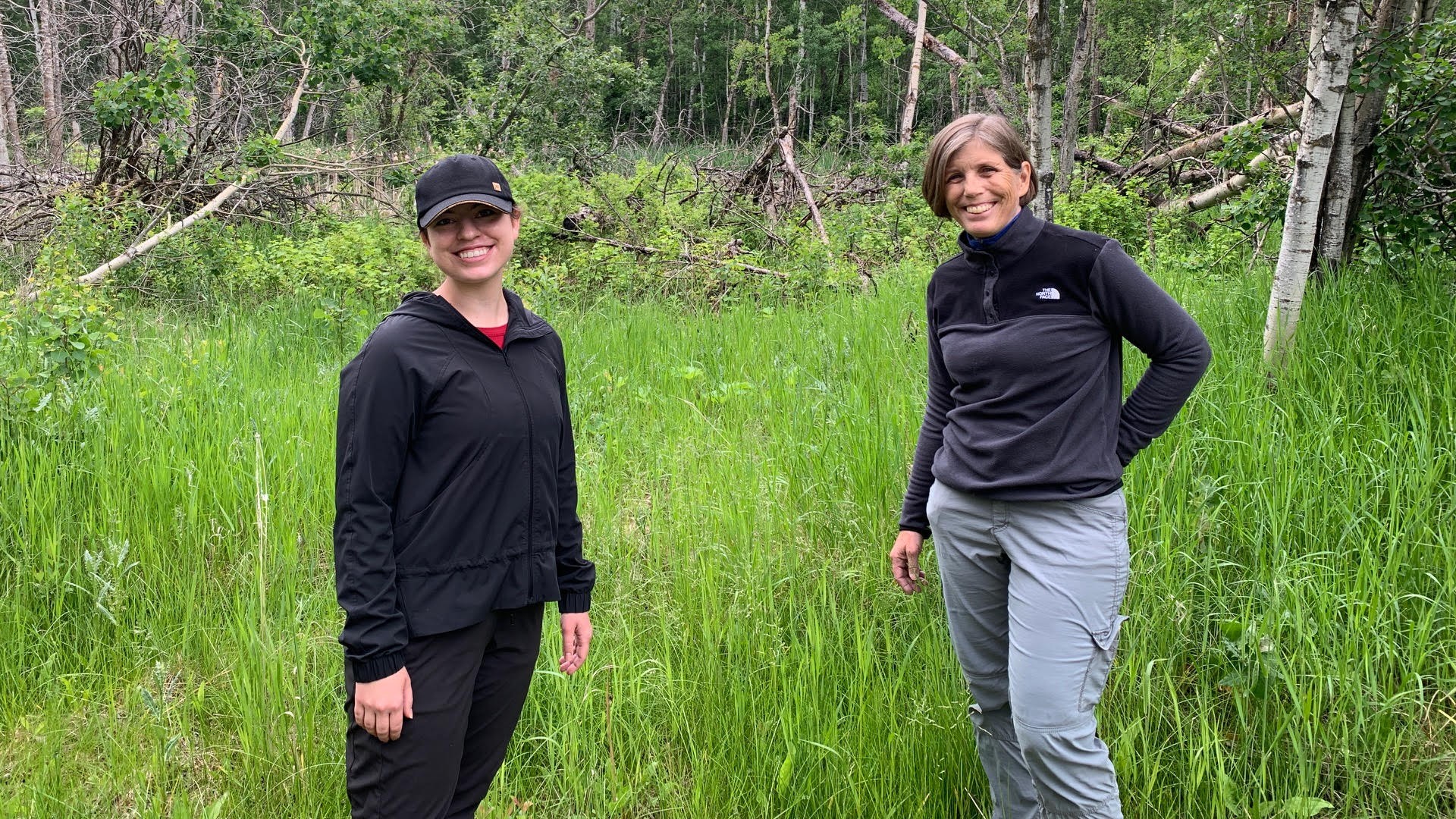A new project aims to make science programs at the University of Alberta Augustana Miquelon Lake Research Station and the Hesje Observatory more engaging for Indigenous K-12 students.
The two rural science facilities already offer programs for educators, post-secondary students and schoolchildren of all ages, but it’s becoming vital to recognize the importance of Indigenous perspectives — and students — to a field grappling with increasingly complex challenges, says project lead Glynnis Hood, an environmental science professor at Augustana Campus.
“There's a clear connection between Indigenous cultures to the land and to the environment, so having Indigenous perspectives in helping analyze and solve these challenges in science, technology, engineering and mathematics (STEM) fields is really important,” she says.
Funded by a Natural Sciences and Engineering Research Council of Canada PromoScience grant, the collaborative three-year project will create and deliver hands-on experiential programs that bring the sciences alive in a meaningful way for the youngsters, Hood adds.
“We want Indigenous students who take part in the programming to feel connected between their own experiences, cultures and the sciences, to have fun and to see that they have a place in those STEM fields.”
The project draws on the expertise of Indigenous partners First Nations Technical Services Advisory Group, Future Ancestors Services and the Louis Bull Tribe, working with the U of A’s Centre for Mathematics, Science and Technology Education, Augustana Indigenous Student Services and the Beaver Hills Biosphere Association.
The initiative can become “one of many spaces for Indigenous youth to show up as their full authentic selves, with all of their brilliance and experience,” says Samantha Matters of Future Ancestors Services.
It also gives teachers, scientists and other professionals the chance to become students themselves.
“In many cases, they have much to learn from Indigenous youth, peoples and communities. Indigenous ways of knowing in STEM education can help us come to understand that we are inherently part of the natural world, not separate from it,” notes Matters, who is Métis and holds a BSc in environmental science from Augustana.
“Our worldview is one of coexistence, interconnectivity and relationality.”
Making connections
Indigenous staff and students from Augustana Campus, like Jacqueline Kublik, will help develop and deliver STEM programming.
Recruited for the summer, the fourth-year bachelor of science student, a member of the Métis Nation of Alberta, hopes to get youngsters excited about the sciences.
“We can provide a cool opportunity here for them to connect with the land and with each other,” Kublik says, noting she always loved her science classes in school but realizes they could have been richer learning experiences.
“The classes I took were mostly spent inside, but why wouldn’t we also highlight more Indigenous knowledge and be out on the land in a way we can learn from? And it would have been nice also knowing the connections between Indigenous and western ways of knowing.”
“Science is often lab-based, but really, it’s all around us in nature,” Hood adds.
“When you’re learning on the land, you can make that connection in meaningful ways, and that helps show students that separate scientific disciplines like chemistry, biology and astrophysics flow into and support each other.”
Lessons about biology, chemistry, math and astrophysics will be designed with hands-on activities that take Indigenous land-based learning approaches.
Pilot programming, which began this summer on site at the research station, will also be delivered virtually and in interested Indigenous communities, with expert help from the project’s Indigenous-led partner groups.
Their work will include liaising with communities interested in STEM visits, advising on programming formats, identifying Elders and Knowledge Holders to support program development, and aiding in program delivery.
Training the trainers
The project holds potential to further some of the Calls to Action from the Truth and Reconciliation Commission of Canada, specifically around developing culturally appropriate education programs for Indigenous youth and educating teachers, Matters notes.
The initiative takes a “train the trainer” approach that aims to support educators in understanding how to respectfully and authentically engage with Indigenous knowledges and ways of learning in the classroom, she says.
Reconciliation is at the heart of the project, Hood adds.
“We want to create a long-standing linkage that makes a really meaningful experience for Indigenous students and communities, and moves us all forward together in partnership.”
